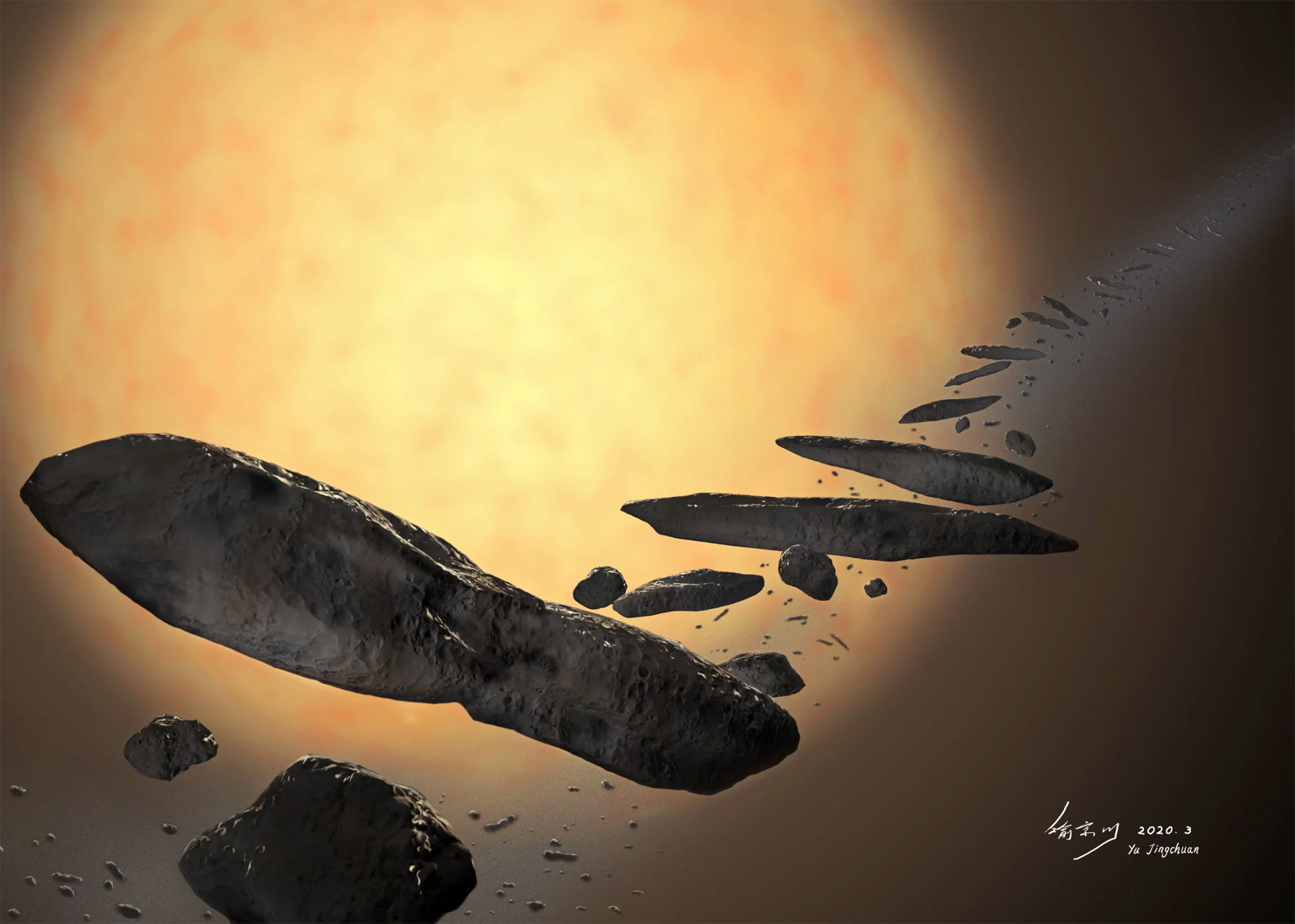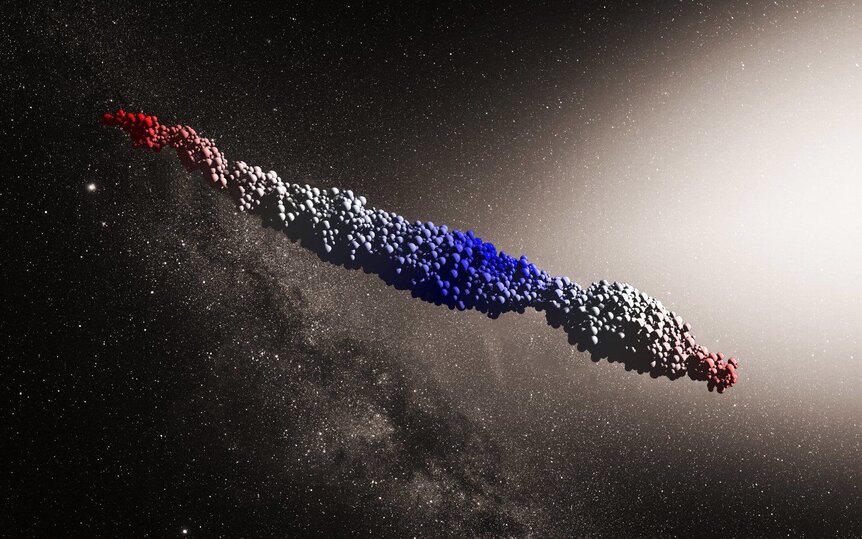Create a free profile to get unlimited access to exclusive videos, sweepstakes, and more!
Is the interstellar visitor 'Oumuamua a fragment of a shattered alien world?

So it's been an interesting week for comets. 2I/Borisov, the second interstellar comet we've ever seen, split in half; the comet we were hoping would be the brightest of the year (C/2019 Y4 ATLAS) instead disintegrated; and the first interstellar comet we've ever seen, 'Oumuamua, may be a shard shredded off a planet that got torn apart by its dying host star.
I already covered the first one; and what can you say about the second one except, "Well, that sucks."
As for 'Oumuamua, well. It's a weird one, and a lot of people have been trying to figure it out. This idea that it’s a survivor of catastrophe has the quality of being new and somewhat different but also plausible. So let's take a look.
The first alien visitor to our solar system ever found shocked astronomers when it first appeared in 2017. Seen in observations by the Pan-STARRS telescope, it immediately was seen to be weird, moving on an orbit that looked like it came from deep interstellar space. The orbit was hyperbolic, meaning the object was moving too quickly to be bound to the Sun. It must have come from another star.
Then it got weirder. It tumbles, flipping end over end, roughly once every eight hours. These observations also indicated it's extremely elongated, at least five times longer than it is wide, so it's kinda cigar-shaped. That’s bizarre. We don’t see any objects in our solar system that elongated.
Then it got weirder again. As it headed away from the Sun it slowed down, as expected from the Sun's gravity pulling it, but it wasn't slowing down rapidly enough. The most likely reason is that it was outgassing, with ice turning to gas and expanding away, acting like a very low-power rocket. But sunlight-reflecting dust escaping with the gas would make it easy to see, yet nothing was seen around it!
This caused speculation that it’s an alien spaceship, which is … unlikely. Or it could be a fractal snowflake. That too is bizarre but maybe more likely … ? Another thought is that it may have a hard crust around it, preventing a lot of gas from escaping.
The overarching thing here is that it's weird and we don't have a good explanation for it. And that's where the new research comes in.
They looked at what would happen if an object like a rubble pile asteroid — literally a bunch of rocks held together by their own gravity, a very common structure for small bodies in our solar system — got too close to its star. They found that if it gets too close, the tides from the star will tear it apart. That's old news (in that we know things getting too close to stars can be ripped into pieces), but they also found that the heat from the passage does two things. First, the object is sintered; tiny particles break off and recollect onto it, and as they do they tend to fall on the ends pointing toward and away from the star due to tides, elongating the object. That's pretty cool! Second, a lot of stuff that vaporizes at lower temperatures goes away, leaving behind a hardened crust.
This does explain a lot of 'Oumuamua’s behavior and appearance. But they also found that long-period comets (with orbits hundreds or thousands of years long) that pass very close to their host stars can also break up and create shards like 'Oumuamua in a similar way, providing a second creation path.
And there's a third that's pretty interesting. They looked at planets being the source. A super-Earth, bigger and more massive than Earth, on a highly elliptical orbit its star (maybe poked gravitationally by a second star in the system and dropped too close to the first star) can be disrupted in the same way, and if the pass is close enough the process winds up being similar to what happens to the rubble pile asteroids and long-period comets. It may be somewhat less likely, but a single event like that can create a lot of 'Oumuamuas. Billions. More.
If the star is a white dwarf — the remains of a star like the Sun after it uses up its nuclear fuel and blows off its outer layers, leaving just the hot and very dense core behind — then this process is really efficient. White dwarfs have immense gravity, and can easily tear a planet to shreds. Moreover, we have tons of evidence this actually happens. That’s terrifying — the idea of planets being torn apart like the Cookie Monster going to town on a snickerdoodle — but the Universe really seems to like ripping up perfectly good things like asteroids and comets and planets.
So this work is theoretical, using physical models of how objects break up, so the question is: Is it right? The prediction it makes is that we'll see a lot more objects as elongated as 'Oumuamua, so what we need to do is find more! Extrapolating from these observations indicates that interstellar bodies like 'Oumuamua are relatively common, it's just that we haven't been able to see them (and follow up on them with big observatories) until recently. So we'll see. If the next ten in a row are more like Borisov then that's hard to explain this way, but if they look more like 'Oumuamua then maybe this idea holds water.
I love that there are so many ideas about what this thing is. But that's par for the course in science; when something new and strange is found, tons of ideas bubble up. More observations eliminate lots of them, and the ones that survive get tested even more. Eventually one or a few survive, and these become the standard against which other ideas must compete.
It's like evolutionary science for science itself, and the process helps us find our way to the truth. I’m really curious what the truth is about 'Oumuamua, and hopefully we’ll have a lot more such beasts to look at that will help us along the path to finding it.





























